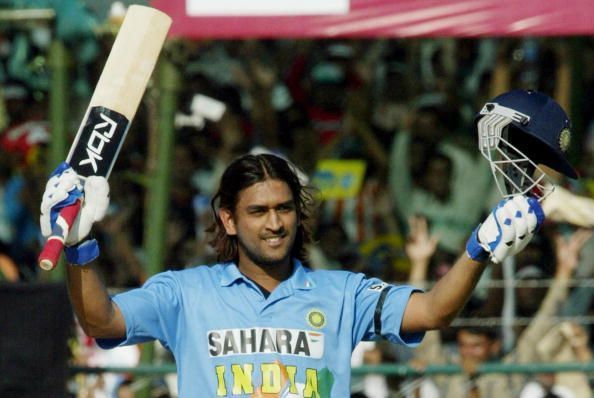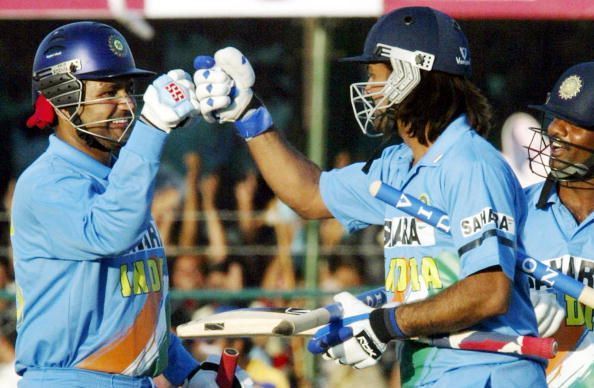
SK Elite: MS Dhoni's pyrotechnics light up the Pink City

Six months before it played host to ‘Dhoni’s Diwali Dhamaka’, I visited the Sawai Mansingh Stadium, a few kilometres from my house in Jaipur.
The thrill of visiting an international cricket stadium evaporated as soon as I set foot inside the main grounds: to my left was a herd of cows, happily munching on some not-so-green grass; in the distance was a small, jaded cricket academy where budding cricketers were swinging their bats, and on the other end was a group of young ruffians playing the game’s crude version with a thin stick and makeshift ball. “How would this ugly looking stadium ever host a game?”, I wondered.
Remarkably, the arena underwent a dramatic change within a few months, playing host to Sri Lanka in an ODI, and just like the now-swanky ground, saw one man’s fortunes catapult like no one else’s.
“How would he survive in the team?”, everyone had previously wondered, poking fun at the technical fallacies of a young Indian wicket-keeper who had stumbled to a string of failures in his first few international games.
In a matter of 145 balls, Mahendra Singh Dhoni bulldozed his way to what is, till date, the highest score by a wicketkeeper-batsman in ODIs.
Despite his quite so public failings and general mistrust, Greg Chappell had a knack for promoting young talent by giving them enough lives to turn their failure into success. While Dhoni debuted under Wright, he blossomed under the tutelage of Chappell.
A day before the match, skipper Rahul Dravid decided to slot Dhoni in at No. 3, making him the latest guinea pig in a long line of experiments that saw even Irfan Pathan be promoted in the batting order.
Before the game, Dhoni had an average of 37.53 from 20 games. It has been more than 270 games since then, and till date, his ODI average has never dropped below 40.
Sachin Tendulkar was back in the hut early, Dhoni stood alongside Virender Sehwag. Two attacking batsmen were at the crease; one had to take charge.
The instructions were simple: size up the delivery, hit in the line of the ball, and lift it over the fielders.
Nine runs into the chase, Dhoni lifted Chaminda Vaas over the covers: the technique looked unlovely, but it was something India had to get used to over the next one decade.
Farveez Maharoof pitched the ball further up, hoping to slip one towards his pads, but the golf-like swing sent it sailing back. The following delivery was floated up next to the off stump, and Dhoni slapped it away with a horizontal swat, sending the ball flying right in the line of the cameras.
Trying to bandage the bleeding Lankan pacers, Marvan Atapattu introduced Upul Chandana, who was welcomed with a horizontal swipe that soared over square leg. Taken aback, he came around the wicket to cramp him for room, but Dhoni nonchalantly stepped aside and hammered it over the ropes.
Interestingly, the then 24-year-old didn’t come down the track as often to the spinners, staying inside and striking whatever was in his vicinity. As the fielders spread out, Dhoni used his brute force to clobber deliveries beyond the ropes, backing his natural instincts to make a sound connection with the bat.
The Lankan spinners were treated with the same respect as local net bowlers, with cap-adorning Dhoni swinging his bat around like Thor's Mjolnir. By the end of the missile-launching exercise, Chandana and Dilshan were gasping for breath. A motionless Atapattu just stood, unable to find Dhoni’s name on the list of plans he would have drawn up before the match.
With each aerial shot, the confidence meter filled up: even for his 100th run, he preferred driving the ball over point, a dry smile beaming on his face as he changed ends. An animated, machine-gun bearing celebration ensued, as he breached the three figure mark only for the second time in his then unvarnished career.
Against Muralitharan, one of the top-10 bowlers in ODIs at the time, he rocked back to counter the spin and punched it away square on both sides, just like he would on a starry night at Wankhede, six years later.
The finishing line was fast approaching as Dhoni kept feasting on the attack. With 86 required off 19 overs, Dhoni began to cramp moments after clobbering a maximum off Dilshan's harmless off-spin. Squatting up and down for 300 deliveries, and returning to bat right after, he had strained his then-unconditioned body.

A limping Dhoni then decided to deal in maximums, not wanting to waste much time. With Venugopal Rao for company, Dhoni smote two more sixes to finish things off, striking the air with his bat as he celebrated a stupendous chase and a personal victory.
The way Dhoni plays now is a testimony to the fact that he has worked extremely hard on the finer points in his batting. He has picked certain aspects of his own game and strengthened them: the lofted drives have made way for nudges and pokes, as he now carefully constructs an innings instead of going hammer and tongs.
The spirit remains the same, but the packaging is better now; six hits aren’t just muscled away, they are measured and effortless deposits over the ropes.
Just like the blades of grass inside the stadium turned from Feldgrau to avocado green, an unpolished Dhoni metamorphosed that afternoon, trading his previously vulnerable skin for an impregnable Kevlar suit. Maybe behind the poker face was an unsure 24-year-old, trying to fathom the depth of the sea he was in. Those pyrotechnics in the Pink City launched him high into the sky, making him realise that stars were what he had to aim for.